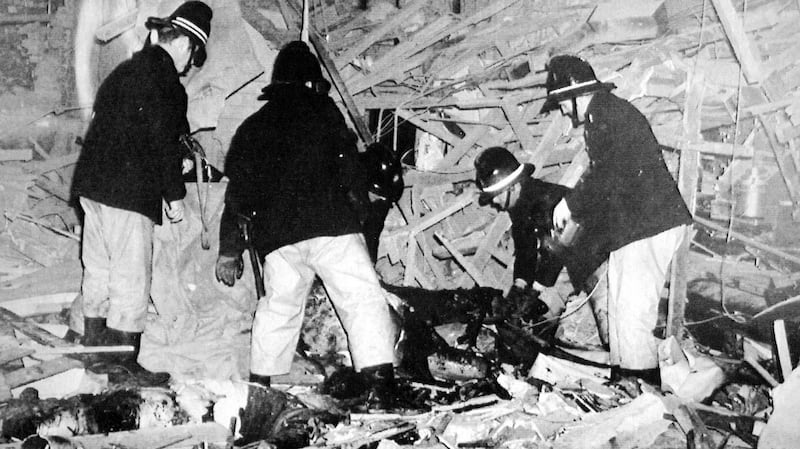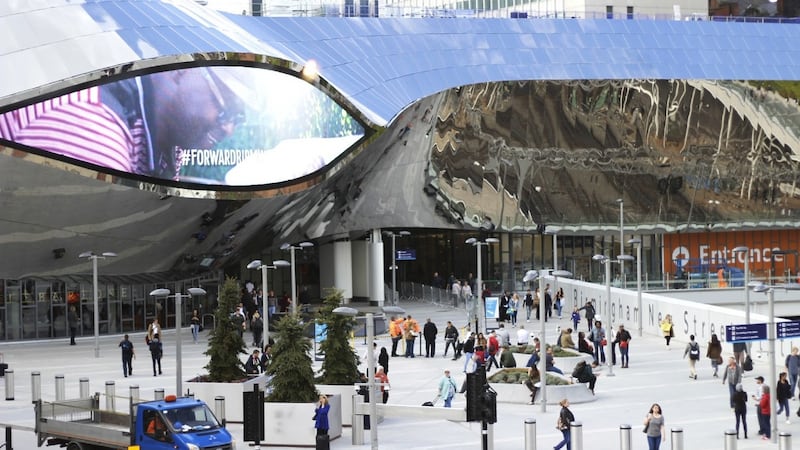The Birmingham pub bombings of November 1974 killed 21 people and left a further 200 injured, but the damage went far deeper. In addition to the miscarriage of justice which saw the Birmingham Six imprisoned for 16 years while the real perpetrators remain at large, the trauma of the bombings and their aftermath left a lasting impact on Birmingham, shaping community relations and personal identities for a generation.
In 2015, the Birmingham Irish Association held a witness seminar in the history department of the University of Birmingham to gather and record memories of the night of the pub bombings, and consider their historical importance. We brought together a panel of speakers from the families of those who lost their lives, as well as survivors, members of the attending emergency services, and representatives of Birmingham's Irish communities. Forty one years after that fateful night, we wanted not only to record stories, but to try to understand how an event like the pub bombings impacted on people, communities, and the city itself.

As memories were shared and victims heard, two issues united the audience and suggested a way forward. The first was the overwhelming feeling that Birmingham needed to mark and memorialise the bombings in a more substantial way. Perhaps unsurprisingly, it seemed that the city had tried to minimise the memory of the bombings, perhaps in the belief that it was not something we wanted collectively to remember.
While a small memorial was placed belatedly in the grounds of the city’s St Philip’s Cathedral, it was neither prominent nor located close to the actual bombsites. This seems to have been deliberate, as the lord mayor at the time of the bombings told the BBC, “history needs to be recorded but it can do damage… the council didn’t seek to push [the Birmingham pub bombings] too much in the social life of the city.”

The second issue that emerged related to the damage done by the bombings to Birmingham’s Irish communities. As well as having their share of victims, Irish confidence in the city was knocked badly by the violent aftermath of the blasts, which saw numerous and vicious attacks against Irish people and property.
This anti-Irish violence left many a scar on Irish-Birmingham identities, a reality exposed by the history of Birmingham’s St Patrick’s Day parade. As a primary centre of British-Irish life after the second World War, Birmingham’s annual parade had been one of the biggest across the global Irish diaspora, but it disappeared from the city’s calendar after the pub bombings, not to return until 1996. Irish people in Birmingham, it seemed, felt that it was safer to keep heads down, and became reluctant to vocalise their Irish identities.
While the parade eventually resumed its rightful place, the 21-year gap tells a story, one of a community hurt by terrorism and punished collectively in its wake. And yet, in our seminar and after, it became clear that this was starting to change.

Seizing on the broader desire to commemorate the bombings, Birmingham's Irish leadership stepped to the fore. As chief executive of the Birmingham Irish Association, I set up the Misneach Memorial Committee, bringing together a range of Irish organisations, the University, the Council, and victims' families, to lobby for, and organise, a prominent memorial in the heart of the city.
Having won the support of Network Rail, who have subsequently funded the project, the concourse of Birmingham’s New Street station was chosen as the location, both because of its centrality to life in the city, and its proximity to the bombsites, both of which are visible from the new memorial.
After its unveiling on November 21st, exactly 44 years after the bombs exploded, the new memorial will offer a substantial and enduring testament to the lives of the victims, presenting the historical legacy of the bombings to the many thousands who walk every day through Birmingham's bustling centre. Designed by the artist Anuradha Patel, it comprises three large metal trees with the names of the victims punched into their leaves, marking the city with the identities of those Brummies who never came home that night.
That this new memorial was created through the efforts of Birmingham’s Irish communities sends a further message, a reminder of the centrality of Irish people to all that Birmingham was and is. It has been a project of peace and reconciliation led by a community that has nothing to be sorry for, but which suffered more than most as a result of the bombings.
On the base of the new memorial, a sentence from Revelations stands out, “The Leaves of the Tree are for the Healing of the Nations”. Through their efforts, Birmingham’s Irish leadership has put down a marker for peace which will stand many generations, reminding us all of the long-term damage done by terrorism, and the losses which have changed people’s lives forever.










